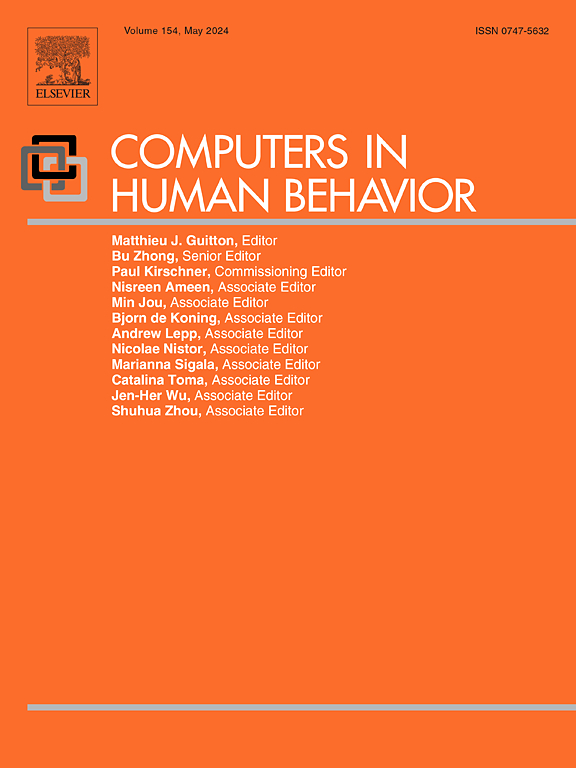(Fake) news-finds-me: Interactive social and mobile media uses and incidental news reliance as antecedents of fake news-sharing
IF 9
1区 心理学
Q1 PSYCHOLOGY, EXPERIMENTAL
引用次数: 0
Abstract
Fake news is a well-recognized problem across most social media platforms and is especially pronounced in far-right networks. This study helps explain fake news-sharing among the far-right with a longitudinal survey of individuals who identify strongly with “Alt-Right” views in the U.S. We assembled theoretical insights on fake news-sharing and social media use for news to hypothesize that reliance on incidental news, in the form of the “news-finds-me” perception, directly increases fake news-sharing, which was supported. We further tested hypotheses about the main and interactive effects of theoretically-informed social and mobile media uses on the news-finds-me perception (directly) and fake news-sharing (indirectly), for a more nuanced understanding of the antecedents. Little is known about how uses of individual social media platforms and different uses of mobile phones are related and interact to shape users’ experiences with incidental news and subsequent sharing behaviors. Our findings demonstrate why it is important to consider how uses of social and mobile media function both independently and interactively to shape how people encounter news. For example, the interaction between Facebook use and mobile phone use for news increased the NFM perception directly and fake news-sharing indirectly, while Facebook use interacted with mobile phone use for political information to yield negative direct and indirect effects. While this integrated approach to studying social and mobile media represents a contribution for scholarship on the NFM perception, we recognize the distinctive characteristics of our sample and also interpret the findings through that lens.
(假)新闻找我:互动社交和移动媒体的使用以及偶然的新闻依赖是假新闻分享的先决条件
假新闻在大多数社交媒体平台上都是一个公认的问题,在极右翼网络中尤为明显。这项研究通过对美国强烈认同“另类右翼”观点的个人进行纵向调查,帮助解释了极右翼之间的假新闻分享。我们收集了关于假新闻分享和社交媒体使用新闻的理论见解,假设对偶然新闻的依赖,以“新闻找到我”的形式,直接增加了假新闻分享,这一假设得到了支持。我们进一步测试了关于理论上知情的社交媒体和移动媒体使用对新闻发现感知(直接)和假新闻分享(间接)的主要和互动影响的假设,以更细致地了解前因。对于个人社交媒体平台的使用和手机的不同使用是如何相互关联的,以及如何通过偶然的新闻和随后的分享行为来塑造用户的体验,我们知之甚少。我们的研究结果表明,考虑社交媒体和移动媒体的使用如何独立和互动地影响人们如何接触新闻是很重要的。例如,使用Facebook和手机获取新闻之间的互动直接增加了NFM感知,间接增加了假新闻分享,而使用Facebook和手机获取政治信息之间的互动产生了直接和间接的负面影响。虽然这种研究社交和移动媒体的综合方法对NFM感知的学术研究做出了贡献,但我们认识到样本的独特特征,并通过这一视角解释了研究结果。
本文章由计算机程序翻译,如有差异,请以英文原文为准。
求助全文
约1分钟内获得全文
求助全文
来源期刊

Computers in Human Behavior
Multiple-
CiteScore
19.10
自引率
4.00%
发文量
381
审稿时长
40 days
期刊介绍:
Computers in Human Behavior is a scholarly journal that explores the psychological aspects of computer use. It covers original theoretical works, research reports, literature reviews, and software and book reviews. The journal examines both the use of computers in psychology, psychiatry, and related fields, and the psychological impact of computer use on individuals, groups, and society. Articles discuss topics such as professional practice, training, research, human development, learning, cognition, personality, and social interactions. It focuses on human interactions with computers, considering the computer as a medium through which human behaviors are shaped and expressed. Professionals interested in the psychological aspects of computer use will find this journal valuable, even with limited knowledge of computers.
 求助内容:
求助内容: 应助结果提醒方式:
应助结果提醒方式:


